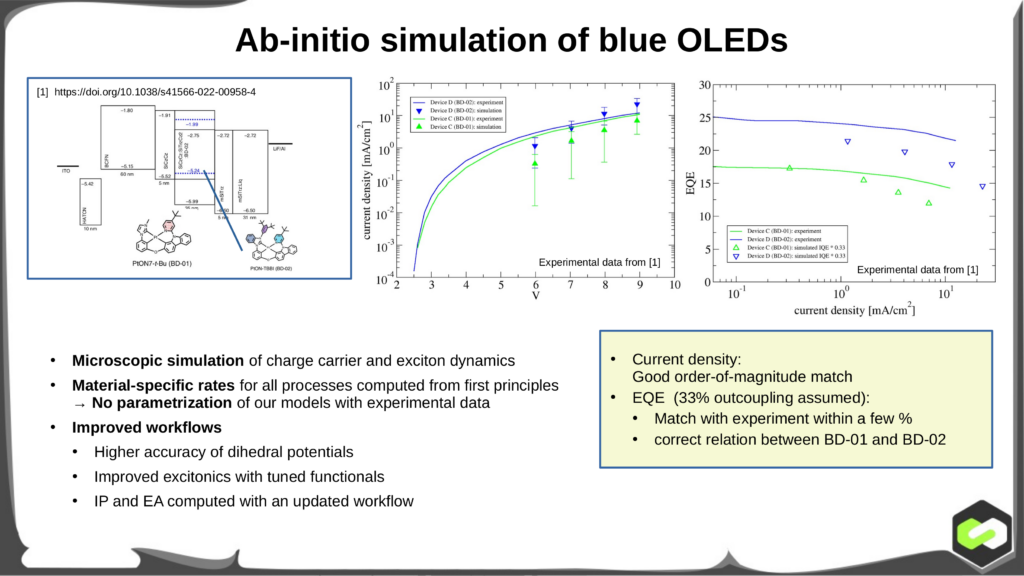Performance and stability of OLEDs is the direct consequence of a multitude of a complex interplay of microscopic processes such as charge transport, exciton formation, separation or quenching. These processes are triggered and balanced by molecular properties of all materials involved in a tightly entangled fashion. To aid the optimization of efficiency and lifetime of increasingly complex multi-layer devices, our simulation approach can serve as a virtual microscope to understand what is going on on a microscopic level. In this use case, we investigate a recently reported blue OLED with exceptional stability [1] and apply our methods to systematically identify and eliminate performance bottlenecks on a microscopic level.
To increase prediction accuracy or our workflow, we recently included three improvements to our microscopic model:
1. Most of the material parameters that determine microscopic rates for charge transport and excitonics are computed on digital twins of organic thin films. Accurate morphologies are therefore the key for predicitve simulations. Specifically the flexibility of molecules during the simulated deposition process has a strong impact on density of states (mean and disorder) of ionization potential (IP) and electron affinity (EA). We updated our protocol to increase accuracy of dihedral forcefields, resulting in intramolecular energies of deposited molecules with DFT accuracy [2].
2. Two other key properties with a strong impact on charge transport, charge carrier balance and formation / separation of excitons are IP and EA.We compute IP and EA with QuantumPatch on atomistic morphologies taking into account unique electrostatic environment of molecules and its polarization response on a quantum-chemical level. Polarization energies are computed by extrapolation to infinite radius and GW corrected HOMO and LUMO levels are used to accurately predict IP and EA.
3. Excitonic processes are determined by molecular parameters such as transition dipoles and excitation spectra. In the updated workflow, these properties are computed using molecule-specifically tuned range separated functionals.

Including these improvementes we simulated charge carrier and exciton dynamics of two blue phosphorescent OLEDs with different Pt-based emitters [1]. From the resulting trajectories we computed IV and IQE, which show very good agreement with experimental data. We further analyzed charge carrier balance and exciton quenching profiles in both devices, showing a higher TPQ rate in the device with the emitter BD-01 than for BD-02. Ultimately, we identified IP and EA as fundamental reason for the difference in performance. Details will be published shortly.
[1] https://doi.org/10.1038/s41566-022-00958-4
[2] Proceedings Eurodisplay 2022, accepted